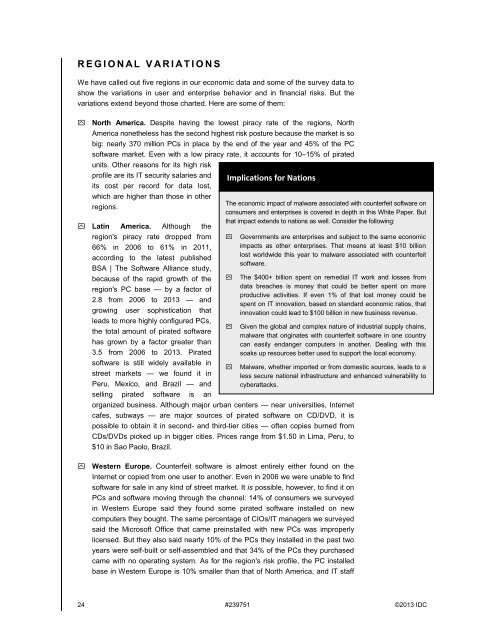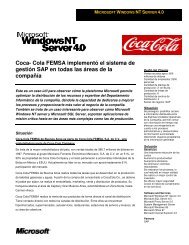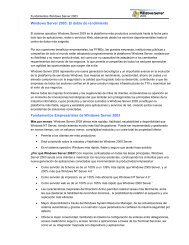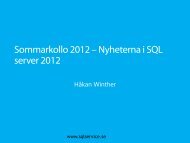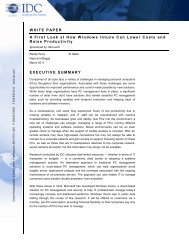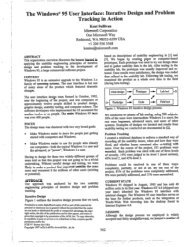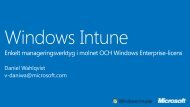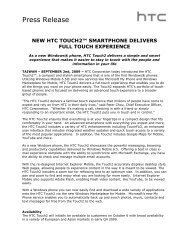The Dangerous World of Counterfeit and Pirated Software - Microsoft
The Dangerous World of Counterfeit and Pirated Software - Microsoft
The Dangerous World of Counterfeit and Pirated Software - Microsoft
Create successful ePaper yourself
Turn your PDF publications into a flip-book with our unique Google optimized e-Paper software.
R E G I O N A L V A R I A T I O N S<br />
We have called out five regions in our economic data <strong>and</strong> some <strong>of</strong> the survey data to<br />
show the variations in user <strong>and</strong> enterprise behavior <strong>and</strong> in financial risks. But the<br />
variations extend beyond those charted. Here are some <strong>of</strong> them:<br />
North America. Despite having the lowest piracy rate <strong>of</strong> the regions, North<br />
America nonetheless has the second highest risk posture because the market is so<br />
big: nearly 370 million PCs in place by the end <strong>of</strong> the year <strong>and</strong> 45% <strong>of</strong> the PC<br />
s<strong>of</strong>tware market. Even with a low piracy rate, it accounts for 10–15% <strong>of</strong> pirated<br />
units. Other reasons for its high risk<br />
pr<strong>of</strong>ile are its IT security salaries <strong>and</strong><br />
its cost per record for data lost,<br />
which are higher than those in other<br />
regions.<br />
Latin America. Although the<br />
region's piracy rate dropped from<br />
66% in 2006 to 61% in 2011,<br />
according to the latest published<br />
BSA | <strong>The</strong> S<strong>of</strong>tware Alliance study,<br />
because <strong>of</strong> the rapid growth <strong>of</strong> the<br />
region's PC base — by a factor <strong>of</strong><br />
2.8 from 2006 to 2013 — <strong>and</strong><br />
growing user sophistication that<br />
leads to more highly configured PCs,<br />
the total amount <strong>of</strong> pirated s<strong>of</strong>tware<br />
has grown by a factor greater than<br />
3.5 from 2006 to 2013. <strong>Pirated</strong><br />
s<strong>of</strong>tware is still widely available in<br />
street markets — we found it in<br />
Peru, Mexico, <strong>and</strong> Brazil — <strong>and</strong><br />
selling pirated s<strong>of</strong>tware is an<br />
Implications for Nations<br />
title<br />
<strong>The</strong> economic impact <strong>of</strong> malware associated with counterfeit s<strong>of</strong>tware on<br />
consumers <strong>and</strong> enterprises is covered in depth in this White Paper. But<br />
that impact extends to nations as well. Consider the following:<br />
<br />
<br />
<br />
<br />
Governments are enterprises <strong>and</strong> subject to the same economic<br />
impacts as other enterprises. That means at least $10 billion<br />
lost worldwide this year to malware associated with counterfeit<br />
s<strong>of</strong>tware.<br />
<strong>The</strong> $400+ billion spent on remedial IT work <strong>and</strong> losses from<br />
data breaches is money that could be better spent on more<br />
productive activities. If even 1% <strong>of</strong> that lost money could be<br />
spent on IT innovation, based on st<strong>and</strong>ard economic ratios, that<br />
innovation could lead to $100 billion in new business revenue.<br />
Given the global <strong>and</strong> complex nature <strong>of</strong> industrial supply chains,<br />
malware that originates with counterfeit s<strong>of</strong>tware in one country<br />
can easily endanger computers in another. Dealing with this<br />
soaks up resources better used to support the local economy.<br />
Malware, whether imported or from domestic sources, leads to a<br />
less secure national infrastructure <strong>and</strong> enhanced vulnerability to<br />
cyberattacks.<br />
organized business. Although major urban centers — near universities, Internet<br />
cafes, subways — are major sources <strong>of</strong> pirated s<strong>of</strong>tware on CD/DVD, it is<br />
possible to obtain it in second- <strong>and</strong> third-tier cities — <strong>of</strong>ten copies burned from<br />
CDs/DVDs picked up in bigger cities. Prices range from $1.50 in Lima, Peru, to<br />
$10 in Sao Paolo, Brazil.<br />
Western Europe. <strong>Counterfeit</strong> s<strong>of</strong>tware is almost entirely either found on the<br />
Internet or copied from one user to another. Even in 2006 we were unable to find<br />
s<strong>of</strong>tware for sale in any kind <strong>of</strong> street market. It is possible, however, to find it on<br />
PCs <strong>and</strong> s<strong>of</strong>tware moving through the channel: 14% <strong>of</strong> consumers we surveyed<br />
in Western Europe said they found some pirated s<strong>of</strong>tware installed on new<br />
computers they bought. <strong>The</strong> same percentage <strong>of</strong> CIOs/IT managers we surveyed<br />
said the Micros<strong>of</strong>t Office that came preinstalled with new PCs was improperly<br />
licensed. But they also said nearly 10% <strong>of</strong> the PCs they installed in the past two<br />
years were self-built or self-assembled <strong>and</strong> that 34% <strong>of</strong> the PCs they purchased<br />
came with no operating system. As for the region's risk pr<strong>of</strong>ile, the PC installed<br />
base in Western Europe is 10% smaller than that <strong>of</strong> North America, <strong>and</strong> IT staff<br />
24 #239751 ©2013 IDC


